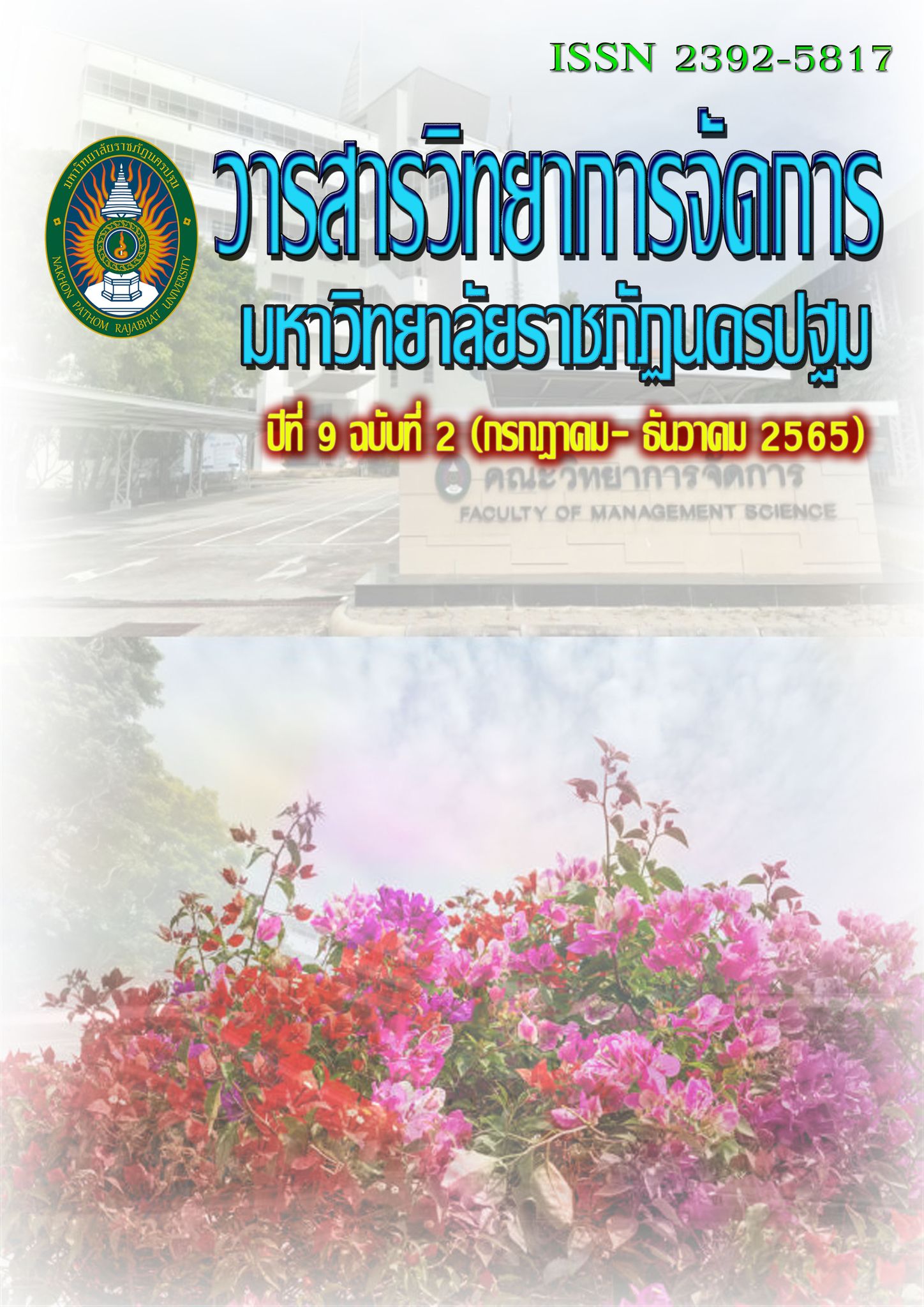Confidence in Production Standards and Perception of Value affecting Consumer’s Decision to Purchase Vitamin Water in Bangkok and Its Vicinity
Main Article Content
Abstract
The objectives of this research were to study confidence in production standards and perception of value towards vitamin water of consumers in Bangkok and its vicinity, to study the influence of confidence in production standards and perception of value affecting consumer’s purchase decision in vitamin water in Bangkok and its vicinity.
The sample were 535 consumers in Bangkok and its vicinity who experienced drinking vitamin water. This study was conducted by using convenience sampling, and descriptive statistics, including percentage, mean, and standard deviation. For inference statistics, MIMIC model and structural equations modelling (SEM) were utilized to find the influence of confidence in manufacturing standards and perception of value affecting the overall purchasing decision of vitamin water. confirmatory factor analysis was used to find the weight of each variable.
The results of the analysis on the confidence in the production standards were found to be at a high level. The first three assessed items were confidence in drinking water producers focusing on the production process, quality assurance process that meets standards, and quality system of food standards. The results of the assessment of overall perception of value were at a high level. The first three assessed items were functional value, emotional value, and cognitive value. Moreover, confidence in production standards and perception of value affecting purchase decision of vitamin water in Bangkok and its vicinity consisted of confidence in product quality (β=0.68), functional value (β=0.67), emotional value (β=0.41), cognitive value (β=0.29), confidence in production standards (β=0.20), and conditional value (β=0.14), while social value had no statistically significant effect on purchase decision in vitamin water in Bangkok and its vicinity. The equation had a predictive power of 90 percent.
Article history: Received 24 December 2021
Revised 27 February 2022
Accepted 1 March 2022
SIMILARITY INDEX = 6.64 %
Article Details

This work is licensed under a Creative Commons Attribution-NonCommercial-NoDerivatives 4.0 International License.
The views and opinions of the article appearing in this journal are those of the author. It is not considered a view and responsibility of the editorial staff.
References
กณิศา อุปพงศ์ (2563).ปัจจัยที่มีผลต่อความตั้งใจซื้อเครื่องดื่มฟังก์ชั่นนอลประเภทน้ำดื่มเติมวิตามินของผู้บริโภค Generation Y ในเขตกรุงเทพมหานคร.สารนิพนธ์ ปริญญาการจัดการมหาบัณฑิต. มหาวิทยาลัยมหิดล.
กรุงเทพธุรกิจ. (2564). ธุรกิจด้านการแพทย์ ความงาม -อีคอมเมิร์ซ ครองอันดับ 1 ธุรกิจดาวรุ่งปี 65. [ออนไลน์]. ค้นเมื่อ 26 พฤษภาคม 2563 จาก https://www.bangkokbiznews.com/business/977702
ชุติมา ชุติเนตร. (2554). พฤติกรรมผู้บริโภคที่มีอิทธิพลต่อกระบวนการตัดสินใจซื้อน้ำดื่มเพิ่มคุณค่าเพื่อสุขภาพ. การค้นคว้าอิสระปริญญามหาบัณฑิต. มหาวิทยาลัยเทคโนโลยีราชมงคลธัญบุรี.
ฐานเศรษฐกิจ. (2563). ยันฮี โดดยิงแชร์ตลาดน้ำดื่มวิตามิน . [ออนไลน์]. ค้นเมื่อ 26 พฤษภาคม 2562 จาก https://www.thansettakij.com/content/
วรัญญา ศักดิ์สิงห์ .(2564). ปัจจัยที่ส่งผลต่อการตัดสินใจซื้อเครื่องดื่มผสมวิตามิน วิตอะเดย์. วิทยานิพนธ์ บริหารธุรกิจบัณฑิต สาขาวิชาวิทยาการจัดการธุรกิจทั่วไป คณะวิทยาการจัดการ มหาวิทยาลัยศิลปากร
ศูนย์วิจัยกสิกรไทย.(2560). เกาะกระแสสินค้าสุขภาพสร้างโอกาสธุรกิจ. [ออนไลน์].ค้นเมื่อ 26 พฤษภาคม 2562 จาก https://www.kasikornbank.com/th/business/sme/KSMEKnowledge/article/KSMEAnalysis/Documents/HealthyProduct.pdf
ศูนย์วิจัยกสิกรไทย. (2563). กระแสรักสุขภาพจากโควิด สร้างโอกาสธุรกิจ SME. [ออนไลน์]. ค้นเมื่อ 26 พฤษภาคม 2562 จาก https://kasikornbank.com/th/business/sme/KSMEKnowledge/article/KSMEAnalysis/Pages/Healthtrend_SME.aspx
สำนักงานมาตรฐานผลิตภัณฑ์อุตสาหกรรม. (2561). ข้อแนะนำประกอบการตรวจประเมินตาม มอก. 17025-2561. กรุงเทพมหานคร : กระทรวงอุตสาหกรรม.
Cochran, W. G. (1953). Sampling Techniques. New York: John Wiley & Sons. Inc.
International Organization for Standardization. (2004). International Organization for Standardization (ISO)†. The Quality Assurance Journal, 8(3).
Kotler, P., & Keller, K. (2009). Marketing management. (13th ed.). Upper Saddle River, N.J: Pearson.
Schiffman, L. G., & Kanuk, L. L. (2000). Consumer behavior. (7th ed.). Upper Saddle. River, N.J Prentice Hall.
Sheth, J. N., Newman, B. I., & Gross, B. L. (1991). Why we buy what we buy: A theory of consumption values. Journal of Business Research, 22(2), 159–170.

